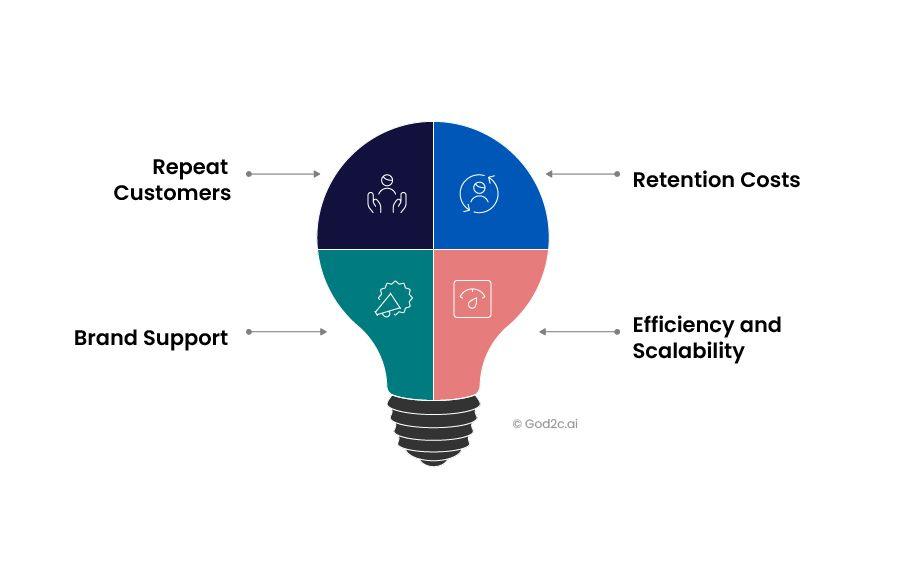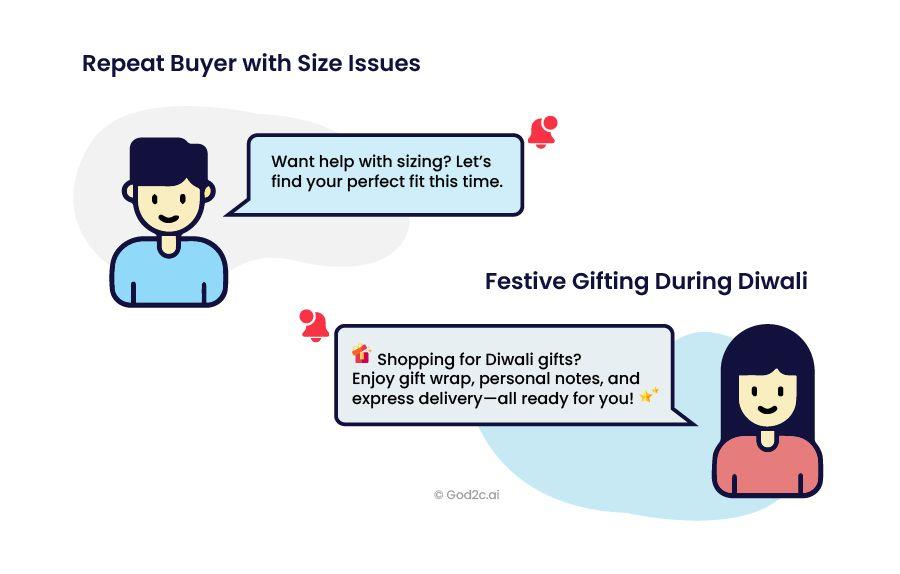How AI Hyper-Personalizes Customer Support for D2C Brands
When a customer reaches out to a brand for help, they don’t just expect quick responses, but they also want personalized support. Imagine connecting with a brand online and getting a response that not only uses your name but also remembers your last purchase, understands your preferred language, and even knows your location to give relevant updates. That’s not just good customer service. That’s hyper-personalized support.
Today, many brands say that they are offering a personalized experience. But calling someone by their first name or mentioning their last order isn’t enough anymore. Today’s customers expect brands to recognize them as individuals, with preferences, behaviours, and a history of interactions that the support team understands.
In this blog, we’ll explore how AI is helping D2C brands deliver truly hyper-personalized support.
What is Hyper Personalization in AI-Driven Customer Support?
Hyper-personalization in customer support moves far beyond basic automation or rule-based chatbots. It’s about a dynamic, context-aware service that recognizes each user as a distinct individual, not a case number. While standard tools automate simple interactions, hyper-personalization adapts in real time, responding to a customer’s query based on their unique data, preferences, and history. Contextual intelligence, powered by advanced AI, means support that resonates with the user’s situation, intent, and even mood.
Why “Personalized Support” is Not Enough?
According to a McKinsey study, 71% customers expect companies to deliver personalized interactions, and 76% become frustrated when that doesn’t happen.
For D2C brands, this is especially critical. Every customer expects to be treated as a repeat buyer with unique needs, not as a generic ticket in the queue. When support reflects individual preferences and history, it builds lasting loyalty. When it doesn’t, even a great productwon’t be enough.
What Real Hyper-Personalization Looks Like
AI makes it possible to understand the full context of every customer and use that information to provide highly tailored support. Here are the key elements that define true hyper-personalization:
1. Location-Aware Support
When a customer contacts support, AI can instantly detect their city or regionnot just from the delivery address, but from browsing behaviour or device data. This helps in offering timely, relevant updates.
For example, if there's a weather-related delay in deliveries to Assam, the system can inform the customer upfront. Or if a product is out of stock in Delhi but available in nearby locations, it can offer alternatives instantly.
2. Personal Name with Matching Tone
Using someone’s name in a message isvery basic. But tailoring the tone to match their past interactions adds real value. If someone usually writes short, to-the-point messages, the support response can mirror that style. If a customer prefers a more detailed explanation, the response can be more thorough.
Over time, AI learns from customer behaviour and adapts the tone accordingly, without the customer having to repeat themselves.
3. Understanding Customer Purchasing Pattern
AI can go beyond listing past orders. It can understand the purpose behind the purchase.
For instance, if a customer buys running shoes, the system can recommend complementary products like sports socks or shoe bags. More importantly, if there’s a common issue with sizing for that product, the system can proactively offer size guidance or check if the customer has had any issues before.
4. Support in the Customer’s Language
One of the most powerful ways to personalize support is by speaking the customer’s language. AI models can detect regional languages like Hindi, Tamil, or Bengali and switch the chat language accordingly.But this isn’t just translation. It involves using familiar phrases and tone. For example, addressing someone in Marathi with the right cultural greeting creates immediate comfort and trust.
5. Recognizing Purchase and Return Patterns
Some customers wait for seasonal sales to make a purchase. AI can track these patterns and adjust the support strategy. For example, if someone has returned two orders in a row, the system can flag it and suggest a size guide or live assistance for future purchases. It can also prioritize loyal customers during peak seasons.
6. Validating Past Experiences
AI systems can remember more than just transactions; they can recall tone, complaint history, and resolution outcomes. If a customer had a bad experience earlier, future interactions can be handled with extra care.
Why D2C Brands Can’t Ignore Hyper-Personalization
Here’s why these matters:
1. Repeat Customers
A loyal customer is worth far more than a one-time buyer. Personalized support increases customer lifetime value because it builds trust and convenience.
2. Retention Costs Less Than Acquisition
With rising ad costs and stiff competition, acquiring new customers is expensive. Personalized support helps keep existing ones happy, and that costs less.
3. Support Builds (or Breaks) Your Brand
A positive support experience often matters more than the product itself. Customers remember how they were treated, especially when they had a problem.
4. Efficient and Scalable
AI-powered support handles a large volume of queries without getting tired or making mistakes. This reduces pressure on human teams and improves consistency.

Real Life Examples of How Hyper-Personalization Handles Customers
Let’s look at a few examples:
A. Repeat Buyer with Size Issues
A customer has returned shoes twice due to sizing. Before they place the next order, the system pops up with a prompt: “Want help with sizing? Let’s find your perfect fit this time.” This proactive approach reduces returns and improves satisfaction.
B. Festive Gifting During Diwali
A customer’s past orders suggest they shop for gifts during Diwali. The support chat recommends gift wrap options, personalized notes, and offers express deliverywithout the customer even asking.

Common Challenges and GoD2C’s Approach to Solving Them
1. Fragmented Customer Data Across Systems
Solution: GoD2C’s AI is designed to integrate seamlessly with popular D2C tools, creating a unified view of each customer. This interoperability ensures context-rich support interactions from the first touchpoint.
2. Inconsistent Tone and Robotic Responses
Solution: GoD2C uses continuous learning loops and tone calibration features to maintain brand voice while adapting responses based on customer sentiment, history, and channel context.
3. Cultural and Linguistic Gaps
Solution: GoD2C’s NLP models are trained with region-specific data, enabling localized communication that feels human—whether it’s in English, Hindi, Tamil, or Bengali.
4. Privacy and Data Sensitivity
Solution: GoD2C’s privacy-first architecture ensures all customer data usage is governed by explicit consent, audit trails, and compliance with leading data protection regulations (like GDPR and India’s DPDP Act).
Conclusion
The world is moving faster than you think, and customers are spoiled for choice. And hyper-personalization isn’t a luxury service to offer;it's the defining edge for D2C brands facing an ocean of challenges from sameness. Those who harness it will not only get higher NPS, retention, or sales, but they will be succeeding in building acommunity of emotionally invested, loyal customers.
The shift from reactive support to proactive, personalized engagement is already underway. Brands that embrace it early will not only reduce support costs but also create the kind of loyalty that paid ads can’t buy.
GoD2C’s AI is designed specifically for this environment, bringing together data, language, and behavioral insight to deliver support that feels intuitive and personal.
Are you ready to go the hyper-personalized way?
The future of D2C isn’t just digital. It’s deeply human, one customer at a time. GOd2c’s AI makes that realtoday.

